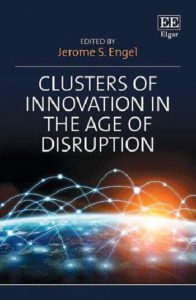The pandemic’s effect on innovation
In 2014, when Jerome Engel and colleagues presented a framework to describe innovation communities in Global Clusters of Innovation, the world was different. Now Engel has refined that framework with Clusters of Innovation in the Age of Disruption, a collection of essays from business leaders and teachers. Berkeley Haas asked Engel, the founding executive director emeritus of the Lester Center for Entrepreneurship (now the Berkeley Haas Entrepreneurship Program), about his new findings.
 What inspired this book?
What inspired this book?
In my first book, we demonstrated how innovative technology companies tend to emerge in clusters in certain regions—and we questioned what drives that process. The world has since entered a period of severe economic, cultural, and environmental disruption due to an ongoing series of shocks. We wanted to investigate what was happening in these innovative communities and whether they demonstrate enhanced resilience. We found that the answer was yes. Clusters of Innovation have entrepreneurial agility that enhances their resilience to external shocks, contributing significant social and economic value to society.
How do they do this?
Through innovation, which I define as the positive response to change. Truly innovative tech trends are often pursued by venture capital-backed entrepreneurial firms. Their market entry strategy is often to approach niche markets, which provide a beachhead opportunity because incumbent firms are not serving their needs exactly. Many of the entrepreneurial firms that blossomed during the pandemic had been in place for years, refining their technology and products. This allowed them to quickly provide solutions when the shock occurred.
Can you provide an example?
Zoom, which displaced slower-moving incumbents to (seemingly overnight) revolutionize business, personal, and educational communications. Its quick mass adoption revolved around product-led growth, an evolution of the freemium model emphasizing ease of user adoption (no logins, no hassle). This allowed the rapid behavior change that enabled a greater collective agility—a greater resilience.